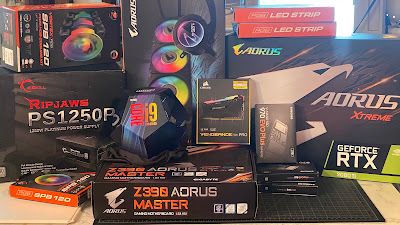About 2 weeks ago, I underwent DMEK (partial thickness cornea transplant) surgery on my right eye. The surgery was successful, but there were some issues following the surgery, so I held off writing this update until I was sure my eye was OK.
At this point, I have undergone cornea transplants in each eye, so I have some basis of comparison, and I better understand that there can be a range of experiences among cornea transplant patients. The biggest difference between my 1st and 2nd surgery experiences is that I have more distinct memories of the first surgery (as documented in my earlier blog post). With the second surgery, I seem to have lost consciousness until it was all over. I do remember arriving early at the surgical center. I remember the nurses preparing me for surgery. I remember chatting with the anesthesiologist, but he did not start applying the anesthetic until after I was inside the OR (compared to last time, when I was already fading in and out of consciousness as they wheeled me into the OR). This time, I was wide awake as they wheeled into the OR, and I remember thinking, “Oh no, did they forget to numb me?” I remember being inside the OR and being much more aware of sounds and what the room looked like (compared to my last experience where everything seemed to be lost in bright lights and fog). From somewhere out of my sight, a music player began playing some pop music. I remember looking up and seeing the face of the anesthesiologist, who seemed to be enjoying the music. Then I remember looking at bright lights. From this point forward, I have no memory, until I heard my doctor’s voice saying, “That’s it. We’re done.” I remember being surprised that it was over so quickly. I have no memories of the surgery itself. (This was mildly disappointing, as I was hoping to compare what I saw with my previous observations of eye surgery from the patient’s point of view – but I was very relieved it was over!)
Following the surgery, I was sent home with instructions to lie down, facing up. This is so that an air bubble in my eye would push the transplant graft up against the back of my cornea. The next day, I went back to the doctor for my fist post-op visit; the eye patch was removed, computer scans of my eyes were performed, and my vision was tested. I was pleasantly surprised that vision in my right eye was not as bad as I expected (compared to last time when I was almost totally blind in my left eye following surgery). I learned that the reason my vision was so bad last time is that the doctor had used an “aggressive air bubble” (meaning higher air pressure) to hold the graft in place at the back of my cornea. This time, the graft was attaching right away, so the air bubble was “less aggressive”. Hence, my vision was comparatively better this time around (this was something that concerned me my after the previous surgery: everything I had read about DMEK suggested my vision would be “blurrier than normal” for a few days – not almost totally blind). With the graft fully attaching from day one, I seemed to be well on my way to a speedy recovery.
However, my vision began to worsen over the next couple days, and I noticed redness – even brownness - around my right eye. To make matters worse, about 2 days after the surgery I read an email notification (which had been sent the day of surgery but I hadn’t yet read it) which stated that a lab test of the donor tissue yielded the results: “rare white blood cells” and “gram stain positive cocci”. I looked up these terms; the news was not good. These results likely meant infection and probably redoing the surgery. Fortunately, on my next visit to the doctor, I learned that the lab test had been taken from the rim of the donor tissue, but was not a culture of my eye. In fact, my cornea seemed to be healing nicely. Much relieved by this good news, I went home feeling better.
Nevertheless, the vision in my right eye continued to worsen over the next few days – but this wasn’t the “ghostly fog” I experienced previously, this was more like looking through a Gaussian blur filter in Photoshop. My eye became increasingly reddish, itchy and was constantly tearing. Knowing these were signs of potential graft rejection or infection, I returned to the doctor fearing the worst. Well, it turned out that my eye had become too dry following the surgery, and the top surface of my cornea had become irritated or inflamed. While this condition was uncomfortable, it was actually very good news (no graft rejection and no redoing the surgery). The solution was simple: moisturizing eye drops. Over the next few days, the itchiness went away and my vision improved.
At the forth post-op visit, the doctor removed the suture (he used only one for this surgery, but its removal resulted in some additional irritation and tearing over the next few hours). He confirmed the graft transplant is fully attached and my cornea is healing nicely. My vision is improving.
One more difference in this surgery compared to last: the doctor placed this transplant graft slightly above my center of vision in order to avoid an area of corneal scarring. He said this might take a little longer for my vision to recover, but it meant less chance of graft rejection.
Today, the vision is my right eye is still blurry, but significantly better than it was before the surgery. I will post more eye updates as my vision improves. I also want to post some thoughts on how the loss of vision was impacting my life and my artwork.
































